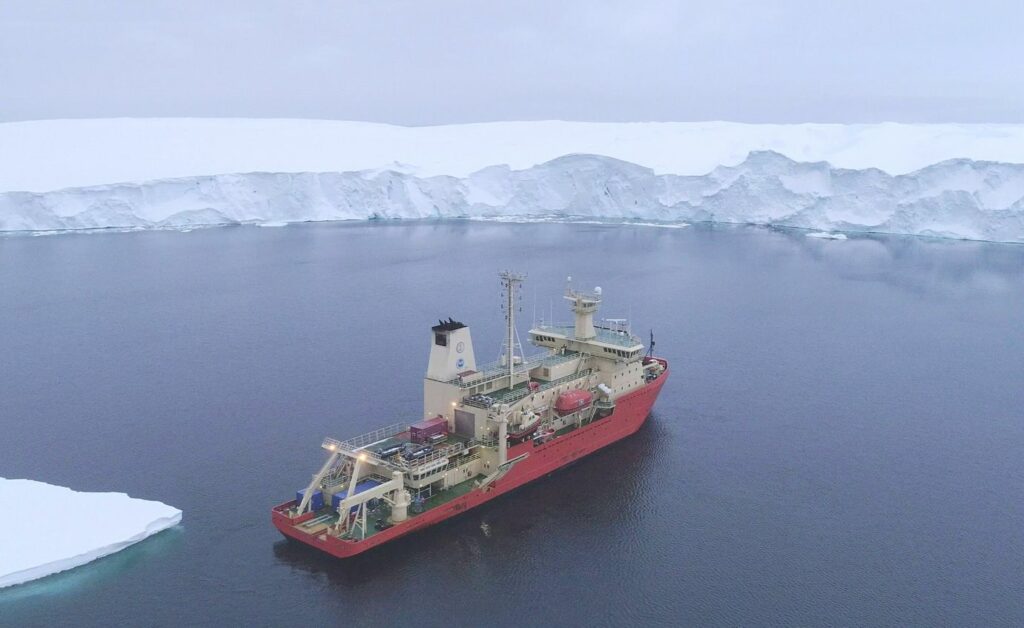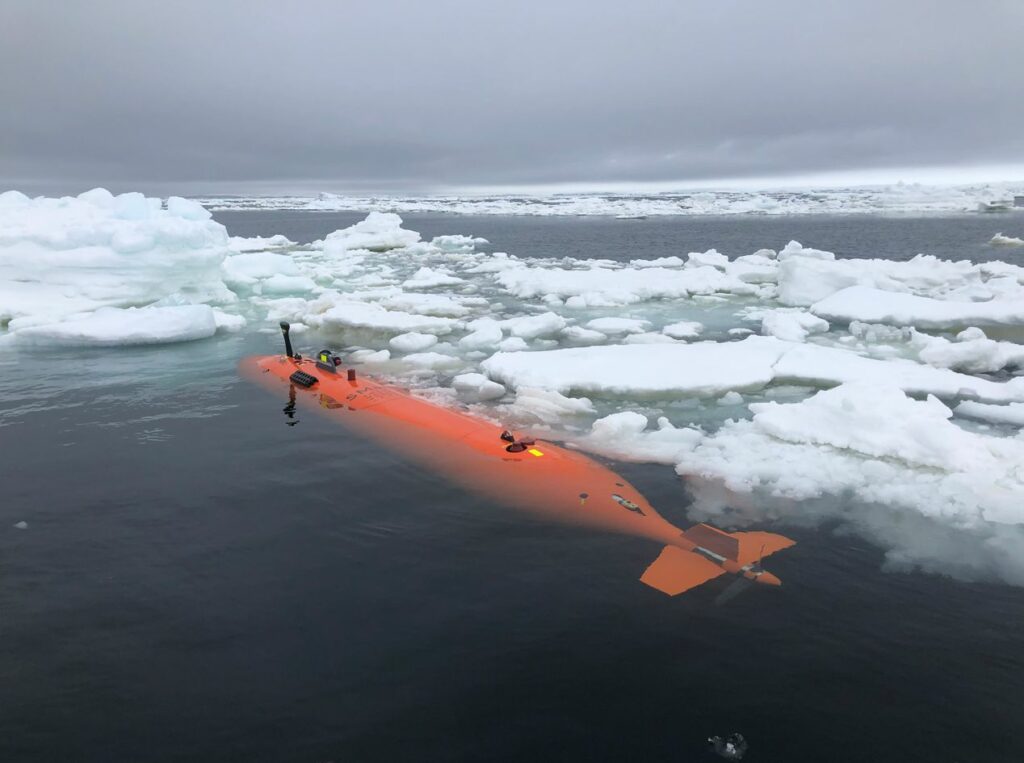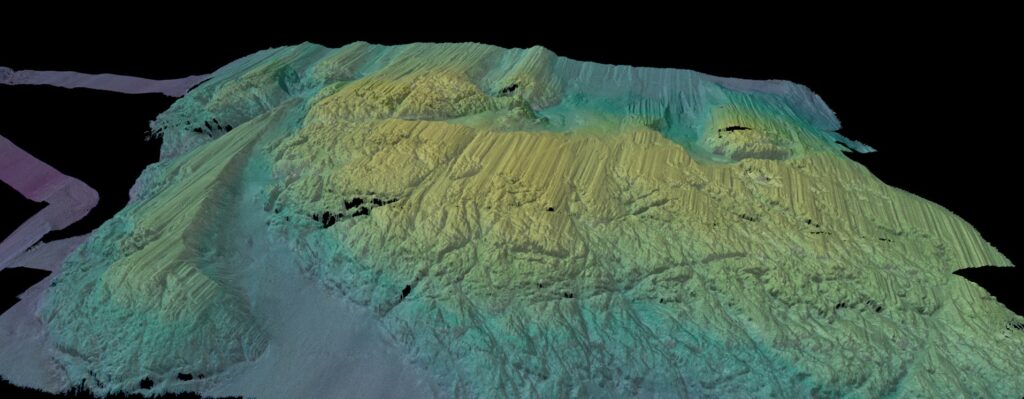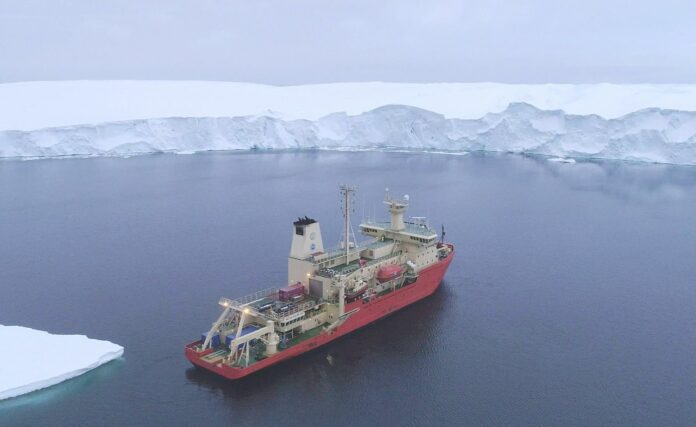The Thwaites Glacier in West Antarctica, which is about the size of Florida, has been a big problem for scientists trying to figure out how much the sea level will rise around the world.
When seen in geological periods, this vast ice stream is already in a phase of rapid retreat, which is known as a “collapse,” which has raised a lot of questions about how much ice it will eventually lose to the ocean and how quickly.
The effects of Thwaites’ retreat might be terrifying: if the glacier and its surrounding glacial basins completely vanish, the sea level could rise by three to ten feet.
Alastair Graham, a marine geophysicist at the University of South Florida’s College of Marine Science, conducted a new study published in Nature Geoscience that provides additional cause for alarm. For the first time, scientists have created a high-resolution map of the seafloor in front of the Thwaites glacier, which provides insight into the glacier’s previous retreat and movement.

The breathtaking image offers a kind of crystal ball to look into Thwaites’ future and reveals geologic aspects that are new to science. In both humans and ice sheets, understanding previous behavior is essential to predicting future behavior.
The leading edge of the glacier moved back and forth with the daily tides, leaving behind more than 160 parallel ridges. These ridges look like a footprint.
“It’s as if you are looking at a tide gauge on the seafloor,” Graham remarked. “It really blows my mind how beautiful the data are.”

Graham added that despite its beauty, Thwaites is troubling because the rate of retreat that scientists have lately discovered is slow compared to the quickest rates of change in its past.
To explain Thwaites’ past retreat, the scientists investigated the rib-like formations 700 meters (just over half a mile) beneath the arctic seas and factored in the tidal cycle for the location, as predicted by computer models, to determine that one rib must have been generated every single day.
The front of the glacier lost contact with a ridge on the seafloor somewhere in the past 200 years, and within a duration of six months, it retreated at a rate of more than 2.1 kilometers per year (1.3 miles per year), which is twice the rate observed by satellites between 2011 and 2019.
As recently as the middle of the 20th century, according to Graham’s findings, Thwaites Glacier may have experienced pulses of extremely rapid retreat.

“Thwaites is really holding on today by its fingernails,” said marine geophysicist and study co-author Robert Larter, “and we should expect to see big changes over small timescales in the future–even from one year to the next–once the glacier retreats beyond a shallow ridge in its bed.”
The team, which includes researchers from the United States, the United Kingdom, and Sweden, launched a cutting-edge orange robotic vehicle dubbed “Rán” from the R/V Nathaniel B. Palmer during an expedition in 2019 to gather the imagery and related geophysical data.
According to Graham, Rán, which was run by researchers at the University of Gothenburg in Sweden, set off on a 20-hour journey that was both dangerous and fortunate. It did so in harsh conditions during an extraordinary summer remarkable for its absence of sea ice, mapping a region of the seabed in front of the glacier about the size of Houston.
For the first time ever, this gave scientists access to the glacier front.
According to Anna Whlin, a physical oceanographer from the University of Gothenburg who deployed Rán at Thwaites, “This was a pioneering study of the ocean floor, made possible by recent technological advancements in autonomous ocean mapping and a bold decision by the Wallenberg foundation to invest into this research infrastructure.” The images Ran took help us understand the current activities taking place at the crucial intersection of the glacier and the ocean.
“It was truly a once in a lifetime mission,” said Graham adding, “the team would like to sample the seabed sediments directly so they can more accurately date the ridge-like features.
“But the ice closed in on us pretty quickly and we had to leave before we could do that on this expedition.”
There are still many unanswered concerns, but one thing is certain, according to Graham: The Antarctic ice sheets are not at all what scientists had believed them to be.
He remarked, “Just a small kick to Thwaites could lead to a big response”.
About 40 percent of people live within 60 miles of the coast, according to the United Nations.
Tom Frazer, dean of the USF College of Marine Science, emphasized that even if the Thwaites Glacier system is out of sight, it cannot be forgotten.
“This study is part of a cross-disciplinary collective effort to understand the Thwaites Glacier system better,” he added.
Through the International Thwaites Glacier Collaboration, the project was funded by the National Science Foundation and the UK Natural Environment Research Council.
The Thwaites Offshore Research (THOR) project, which has a five-year timeline, was launched with the 2019 expedition. Team members from TARSAN, a related project known as the Thwaites-Amundsen Regional Survey and Network Integrating Atmosphere-Ice-Ocean Processes, also participated.
Image Credit: Alastair Graham/University of South Florida
You were reading: This Stunning New Image Reveals ‘Collapse’ Of Florida Size Thwaites Glacier In West Antarctica
